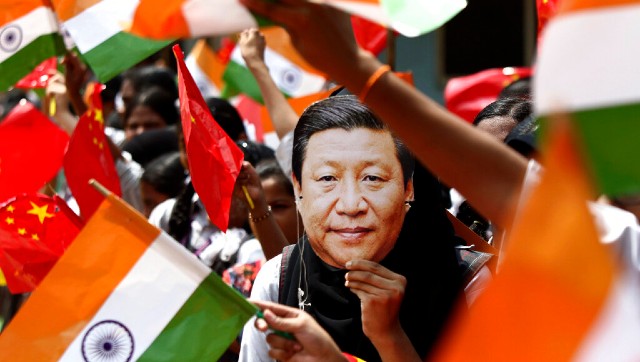Three years since the Doka La standoff, the Line of Actual Control (LAC) has witnessed a series of skirmishes that had culminated in the deaths of 20 Indian soldiers on 15 June. As the news broke, Indians were shocked and their reactions were unified in essence. In this context, there is a stark difference in how India has retaliated to aggression by China as compared to India’s border skirmish with Pakistan in February last year. While Pakistan’s aggression was met with an armed conflict as response, Chinese aggression — so far — is being managed within the economic realm. This article will make the argument that India’s divergent approaches stem from the image of the two countries in the imagination of the Indian majority and the overt influence of domestic political reckonings in India’s foreign policy. A tale of two images Most Indians perceive Pakistan as India’s arch-enemy, a source of constant conflict — both before and after Independence — and perhaps the only way to cause tangible damage to Pakistan’s assets is by destroying them — a clear security issue driven by the history of the two countries. The prevalence of such antagonism is evidenced by the results of the Lokniti-CSDS pre-election
survey. The survey observed that the air strike carried out by India was one of the three main reasons for a seven percent spike in Prime Minister Narendra Modi’s popularity in comparison to 2014. The Indian majority however does not hold such animosity for the Chinese. India and China have had amicable relations in the past — both nations loathed imperialism and had similar growth objectives. In spite of the 1962 war, generations of people on both sides grew up referring to Indians and Chinese as brothers. Hindus — who form the majority in India — further hold little animosity towards Buddhists, but that is not the case with Muslims. In addition to the socialist leaders like Ram Manohar Lohia, Mulayam Singh Yadav, and George Fernandes who have been apprehensive of China, currently a small section of the educated class is also wary of China. [caption id=“attachment_8503991” align=“alignnone” width=“640”] Representational image. AP[/caption] More than anything, Chinese products have significantly bothered Indians. It is impossible not to find a cheaper Chinese alternative to any product being sold in Indian markets and this has often caused trouble to domestic manufacturers. India, in fact, pulled out of RCEP because it feared that the Chinese would flood Indian markets with their products. Perhaps destroying the historic omnipresence of Chinese goods in India and depriving the Chinese of a billion potential Indian consumers seems to be a substantial retaliation in the minds of a majority of Indians. This feeds into India’s foreign policy towards China, hence, the call for import bans. For instance, many Indian officials have continued to advocate the use of economic measures to ’teach the Chinese a lesson’. While voices in the army suggested an armed retaliation, ex-army chief General VK Singh too, in contrast, said, "Let’s hurt them economically." This is, however, only half the picture. India’s economic retaliation is superficial and aimed at appeasing a majority of Indian sentiments while protecting its position within the global value chain, which in turn depends on Chinese goods. Dependence: Domestic investments, goods and technology While the extent of Chinese investments in India is far-reaching, the pace at which the investments grew in the recent past is also pertinent. At the outset, to begin with, Chinese FDI in India has risen by 324.5 percent between 31 March, 2014 and 31 March, 2020, amounting to Rs 54,480 crore. Further, investments in the Foreign Portfolio Investment (FPI) market have risen by 2,281.68 percent between 31 December, 2015 and 31 March, 2020 — which amounts to Rs 3,257.67 crore. Moreover, Chinese investments are considerable in over 15 unicorn startups that are valued over $1 billion (Rs 7,500 crore) each, which include Paytm, Ola Cabs and Byjus to name a few. Furthermore, an economic boycott of Chinese products may not be an effective retaliation. Considering the basics, India only accounted for three percent of Chinese exports in 2019 — the Chinese are not dependent on India to run their economy. Indian dependencies on China are, in fact, much higher, with China being India’s third-largest export destination. It is also arguable whether boycotting Chinese products is viable. Chinese integration within the value chain extends it a share in manufacturing a plethora of goods in some form or the other — if not manufacturing goods, China engages in assembling. Similarly, the Chinese are dominant in digital technologies — they are either the developers or the investors, therefore uninstalling or reporting a few applications is futile. So despite knowing the blatant shortcomings in an economic boycott, why does the Indian government continue to bank on it? Nationalist discourse on both sides and domestic political ramifications The politics of Modi and President Xi Jinping are both predetermined by nationalism rooted in pride. In this context, the populist leaders tread a tightrope characterised by domestic aspirations and international compulsions. In such cases, war is often never an option, also owing to nuclear capabilities on both sides, owing to the extensive damage it would yield. The trade wars with the US and Australia, a rough patch with Canada, and a blow to the Chinese image over the spread of COVID-19 have unsettled Chinese dominance. The repercussions of the global developments on China’s domestic politics are unmissable. Professor Taylor Fravel of the Massachusetts Institute of Technology
remarked that the Chinese incursion is an act of assuaging the domestic pressure in the context of a rattled Chinese nationalist fervour. Thus, irrespective of the distrust and the subsequent long-term economic impact that the incursion portends to cause to China, the move does have its share of domestic dividends for Xi. In India, Modi’s image is at stake among the vast majority of voters, should there be a palpable feeling of defeat among people. When such a feeling was creeping in, the prime minister immediately intervened to convey a note of assurance. He observed that there was no Chinese incursion in India and that the Indian borders are intact. Even a short battle with a country whose defence budget ranges between Rs 13.5 lakh crore and Rs 19.8 lakh crore would be an unintelligent move and could cost the prime minister his strongman image, which, in turn, is central to his domestic politics. And by playing cards that completely align with what a majority of Indians believe is an effective solution, the ruling populist leadership saves its public image. In fact, such a move would also preserve India’s place within the global supply chain by not disrupting prevalent Indian-Chinese relations, with China being the dominant one. It is safe to argue that the politics around people’s notions has served as a respite to the leadership. Vignesh Karthik KR is a doctoral researcher at King’s India Institute, King’s College London. He tweets @krvtweets. Vihang Jumle is is an associate at Ikigai Law, New Delhi. He tweets @vihangjumle
Three years since the Doka La standoff, the Line of Actual Control (LAC) has witnessed a series of skirmishes that had culminated in the deaths of 20 Indian soldiers on 15 June
Advertisement
End of Article


)

)
)
)
)
)
)
)
)



